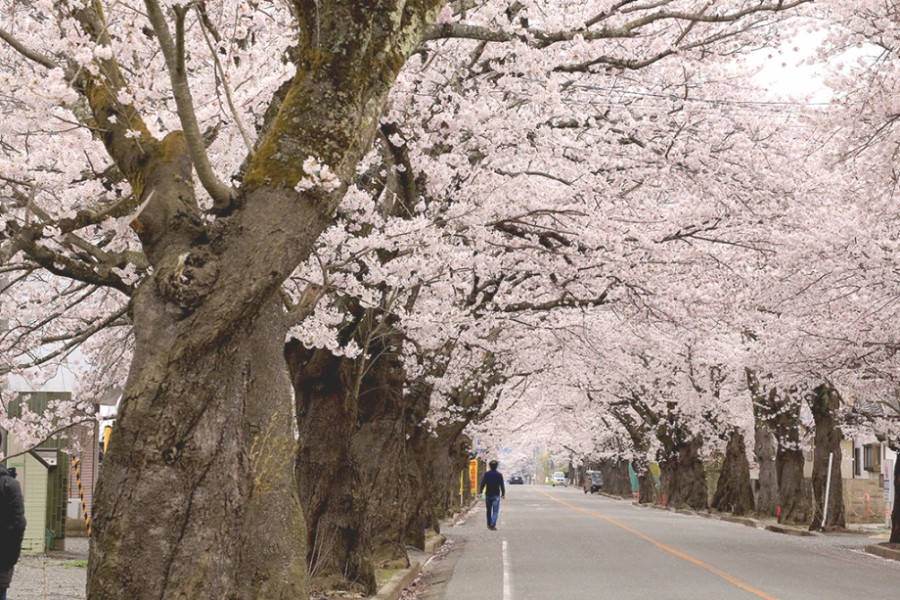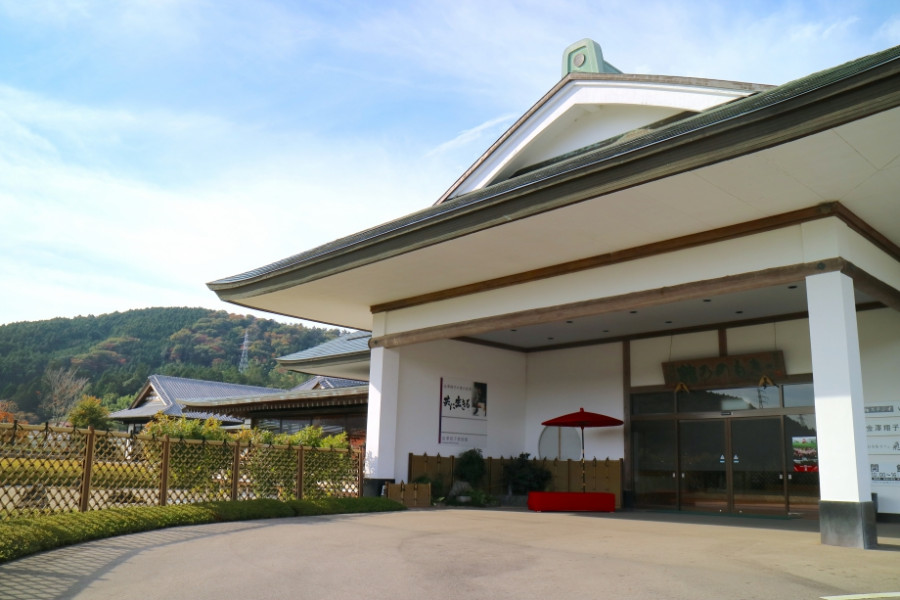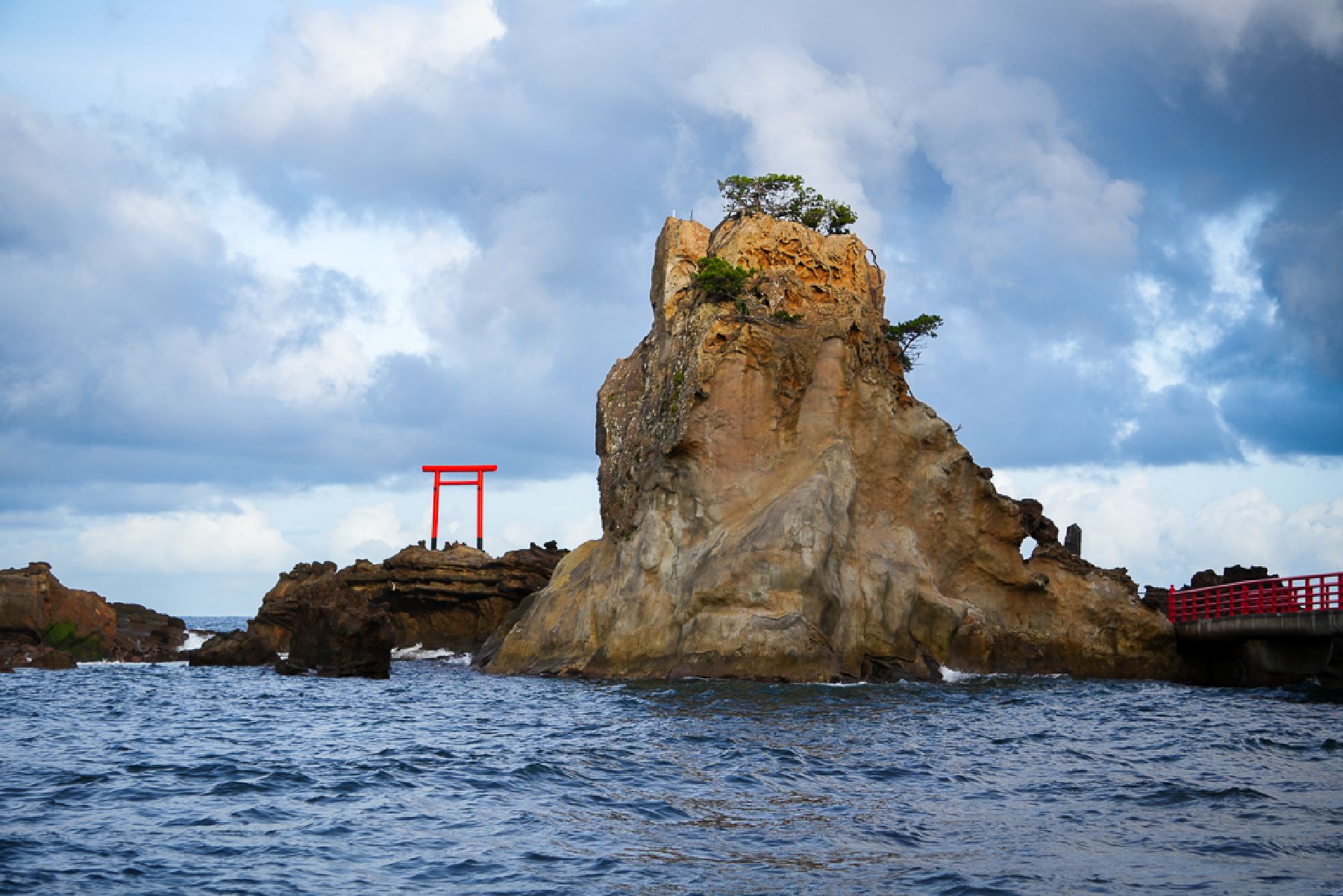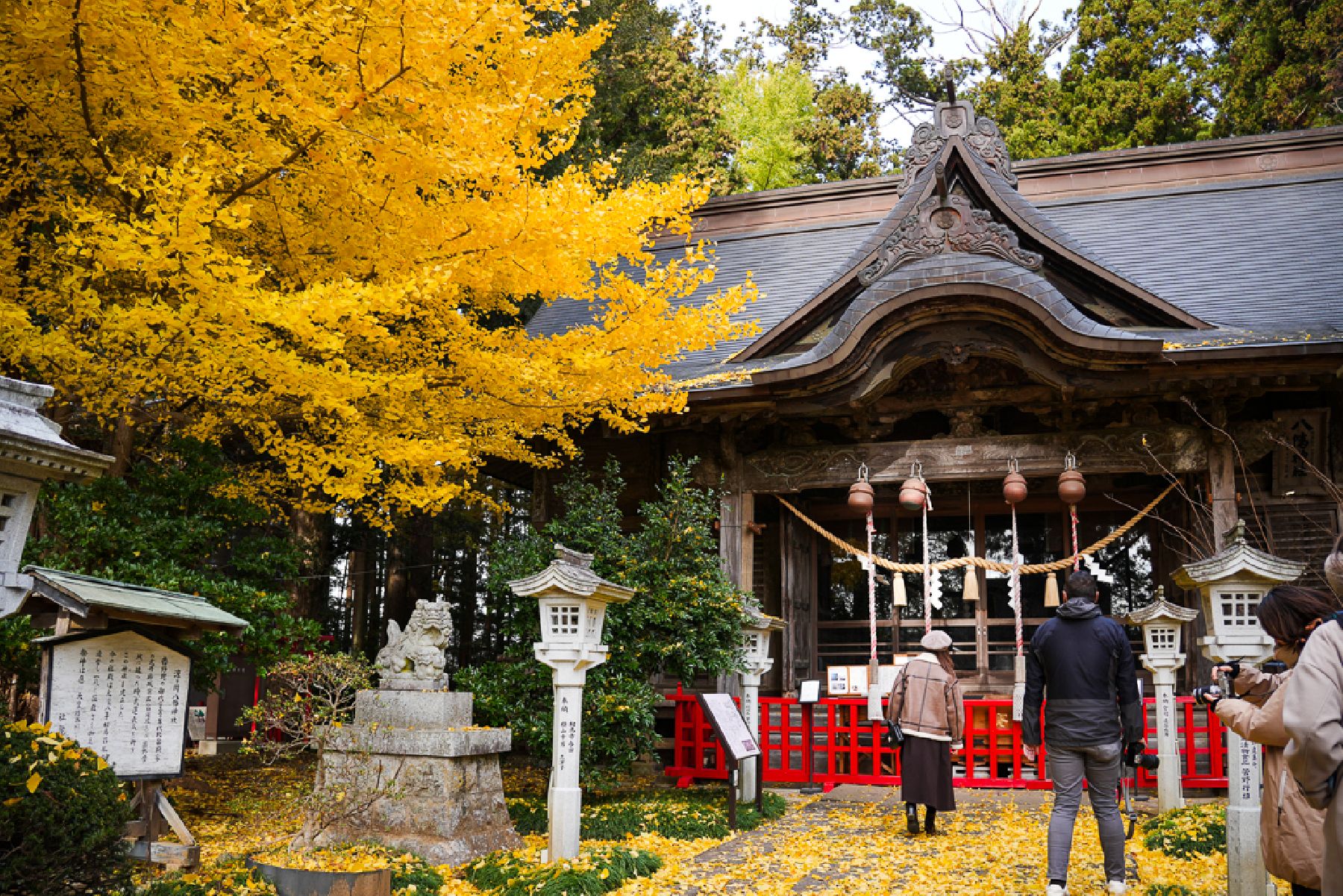
Ogawasuwa Shrine's Weeping Cherry Blossom
Selected by Iwaki City as a Natural Monument, the great weeping cherry tree is over 500 years old. The flowers bloom slightly earlier than those of Yoshino cherry trees, and are lit up by traditional Japanese lanterns in the evenings of cherry blossom season. Stretching even further down than the roots, the weeping branches of the tree give it an extremely beautiful appearance.Illuminations run throughout cherry blossom season; please be aware the shrine can get crowded in the evenings.







